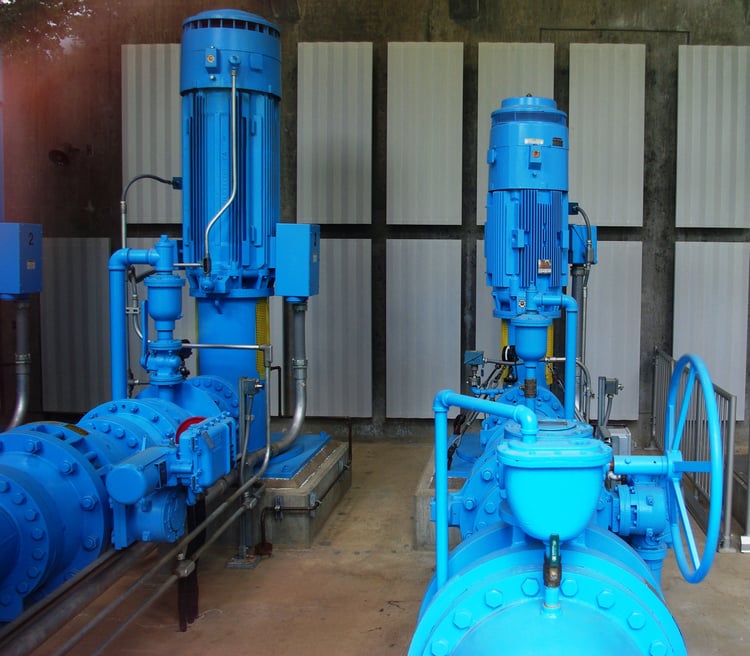
Meeting the BP, EP and FDA standards for the water used in your facility can seem fairly straightforward. However, there are many dangers lurking in and around your system that may be threatening the quality of your water, as well as the efficiency of your water system itself.
1) Threats To De-ionisation Systems
Food manufacturing and processing plants using industrial deionisation systems can face a number of threats, specifically to the cation and anion resins.
Resin Breakdown
If incoming treated water contains high amounts of chloramine or chlorine and is allowed to pass over resins continuously, the result can be resin breakdown. As time passes and the amount of chlorine on resins continues to build up, the resin is broken down from its cylindrical bead form to a combined substance. A resin that has a mushy appearance and texture is one that has experienced damage and must be replaced. Similarly, water containing trace amounts of debris or iron can cause deionisation system resins to become fouled.
Batch Regeneration
Yet another threat facing deionisation resins can be the improper regeneration of the resin once it has acquired contaminants. An improperly-recharged resin will cause its capacity to be greatly reduced.
The practice of batch regeneration can lead to inadequate recharging taking place. In batch regeneration, the resins from several exchange canisters are removed, mixed and regenerated together, and then replaced. However, if fouling exists on just a few of these resins, it will not be properly treated and will reduce the overall quality of all resins in the batch.
Water Movement
If the water in a deionisation system is not moving at three or more feet per second, bacteria can quickly become a problem. Bacteria can also be introduced into an industrial water treatment system via contaminated feed water.
Long Piping Systems
Deionised water needs to travel through piping in order to reach its destination. If piping systems are too long, however, they can become the ideal environment for bacterial growth. And because some piping systems can extend to hundreds, or even thousands of feet, treating all bacterial growth can be nearly impossible.
Overcoming The Threat Of Resin Fouling And Bacterial Growth
The on-board water monitoring feature of deionisation systems will alert operators to the presence of fouling or expired resin. You can also use a digital water quality meter to monitor resin health. However, in order to do so effectively, the meter must be correctly calibrated on a yearly basis.
Installing pumps to ensure water movement above the minimum is another solution to eliminating bacterial growth. Finally, those facilities with long piping systems can limit the growth of bacteria by having an on-site water purification system – such as reverse osmosis – to ensure thorough treatment.
2) Threats To Reverse Osmosis (RO) Systems
Industrial reverse osmosis systems used to treat water in the healthcare industry and NHS can also be faced with a number of little-known threats.
Precipitation Of Soluble Salts
A long-standing issue and continued threat to industrial RO systems is the scale that’s caused when a soluble salt exceeds its solubility limit due to insufficient control of precipitation. Left untreated, this can cause scale build-up to occur. Scaling can cause the flow of permeate and water quality to suffer. Over a period of time, permanent damage to the RO membrane, as well as other areas of the system can occur, which can result in costly replacement of membranes and system components.
Breakdown Products Of Chlorine Residuals
Oxidising compounds like chlorine can cause significant damage to an RO system in the form of membrane degradation and increased passage of salt. Chlorine residuals can do plenty of damage to an RO system even when they’ve been destroyed by a reducing agent.
Assimilable Compounds
The breakdown products created by reducing agents, when combined with organic molecules having high molecular weight, will form assimilable compounds. These compounds are a source of nutrients for bacteria. With enough nutrients, bacteria will thrive, causing the bio-fouling of RO membranes.
Overcoming Industrial RO System Threats
Pre-treatment of membranes will provide a physical disinfection barrier that ensures the quality of feed water. Pre-treatment will also lessen the likelihood that you will need to chlorinate the water after passing through the system. Regular integrity testing of membranes ensures faults are detected early and reduces the risk of critical failure.
Regular maintenance is crucial to reverse osmosis industrial water treatment systems. Plant pumps and membranes require thorough cleaning in order to ensure that quality of water is maintained.
Address Threats To Your Water System With This Free Guide
Threats can lurk anywhere in your water treatment system and need to be addressed before they become a real problem to your manufacturing process. Our free “Guide to Industrial Water Treatment Systems” explains what you need to ensure your facility’s manufacturing water always meets international standards for safety and purity. Claim your copy today by clicking this link.
We’re always ready to help you with your water quality questions. Reach us on 01993 892211, or email us on sales@wychwood-water.com.









 We are a specialist independent company involved in water purification and water treatment technologies
We are a specialist independent company involved in water purification and water treatment technologies


